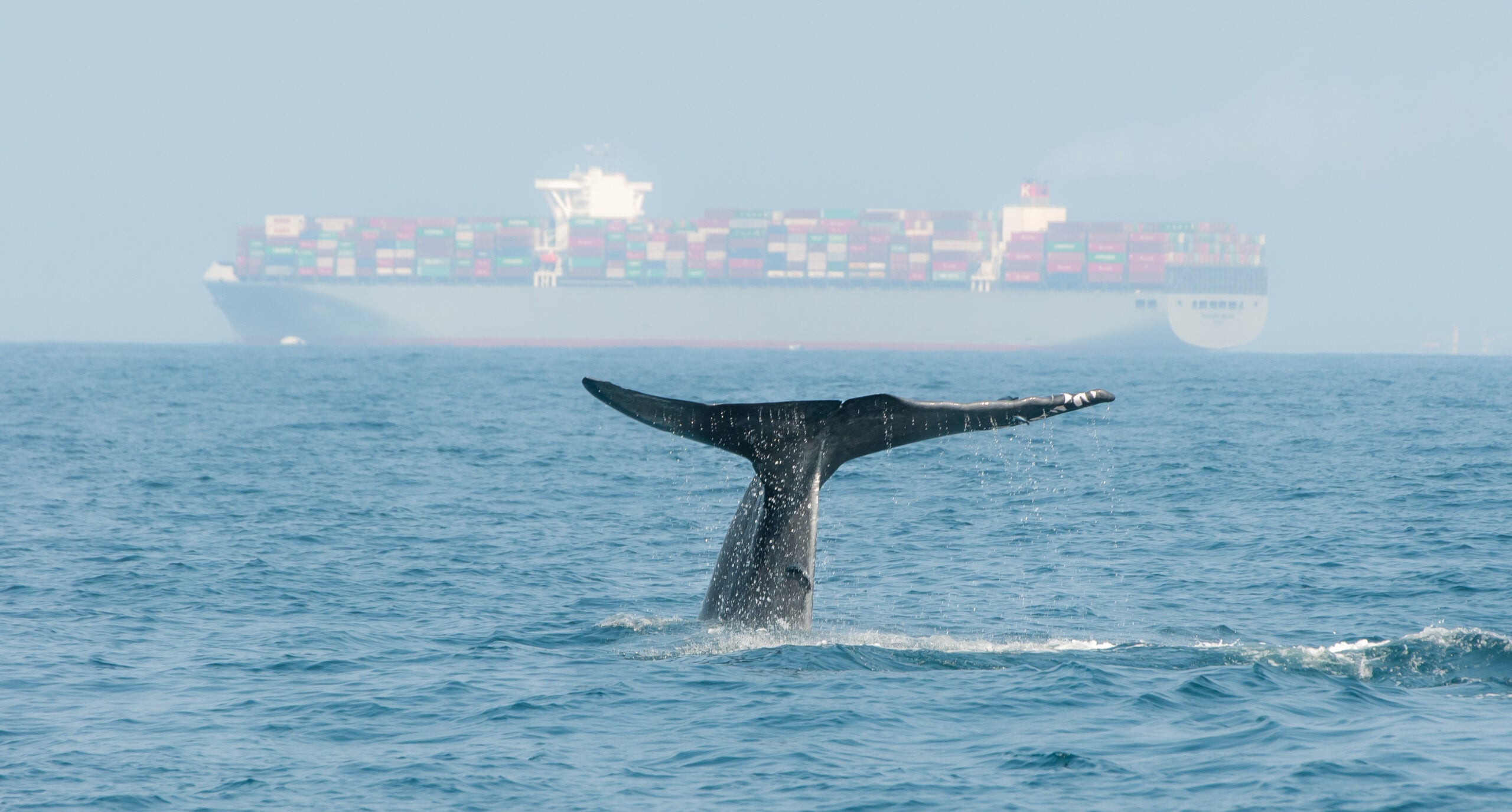KINGSTON, R.I. – March 24, 2023 – When 10 whales washed up on the New Jersey shore earlier this year, people were understandably concerned. Some might have wondered if the problem was related to wind turbines.
James Miller, University of Rhode Island professor of ocean engineering and department chair, answered several questions recently about whether wind turbines have an effect on whale safety and health. He is available to the media for interviews.
Q. What are people saying when whale strandings are reported in the news?
A. “Periodically we read in the news that a whale or some other large animal ends up on the shore, and a lot of times the blame immediately goes to wind turbines. People feel the problem must come from turbine construction noise. Yet when the whales drift ashore, no construction is taking place.”
Q. Is there any evidence that wind farms cause these events?
A. “No. Most of those whales are either struck by ships or are entangled in fishing nets. The great whales – the fins, the blues, the humpbacks, the right whales – these are very tough animals. They’re built for the ocean’s rough environment. Except in rare cases, the sound created from man-made sources is not enough to bother them. The exception is a report on whales injured by explosive dredging in Canada many years ago.”
Q. So are wind farms causing any other problems for whales?
A. “I was out in the Atlantic Ocean south of New England last year for a research cruise, and I saw over a hundred large whales. There were great whales, and maybe a thousand dolphins. They are doing fine, as far as I can tell. The one exception is the critically endangered North Atlantic right whale. But, those deaths are almost entirely caused by ship strikes and fishing equipment entanglements.”
Q. What has been done to limit these threats?
A. “There are recommended and mandatory closed zones, which are continually updated to alert ships when certain species like the North Atlantic right whales are in the area. In addition, there’s a sound system around Massachusetts, Rhode Island, and New Jersey that uses instruments that indicate where the whales are at any given time.”
Q. Are there similar zones put in place when wind farms are under construction?
A. “Yes, construction teams put in place 5-kilometer warning areas to let them know if whales and other marine animals are getting too close to the construction. There is definitely significant noise when pilings are driven into the ocean, but that lasts for only a few hours each day. It typically takes one day of pile driving per wind turbine foundation.”
Q. Does the noise from wind turbines pose a long-term threat to whales and other marine life?
A. “Long term, there are going to be hundreds of turbines offshore, and they emit a low level of noise. In fact, the noise is negligible. An animal would have to be right under one of these things to pick up any noise, and even then, it’s not just going to be much.”
Q. Then why are so many people convinced that there’s a connection between wind farm installations and operations and whale strandings?
A. “I have been in this business for more than 30 years, and unfortunately, reporters sometimes get the acoustics all wrong. It’s one of the reasons I got into this business. I’ve seen a lot in the press about it, but I have not seen any scientific papers that have connected these (wind farm) surveys or construction with any whale impacts at all.”
To reduce the amount of false information, Miller became involved with the Discovery of Sound in the Sea (DOSITS) program, which is supported by URI, its Graduate School of Oceanography and Inner Space Center. It also receives support from the National Science Foundation, the Office of Naval Research, Science and Technology and the National Oceanic and Atmospheric Administration. The site provides information about marine acoustics based on research and published scientific papers. Miller pointed out that the information is presented in a way that makes it accessible to the general public.
In fact, a section on myths and facts from the website provides a strong answer to this statement regarding wind turbines: “Most marine mammal strandings are due to anthropogenic (human-caused) sound.”
“This is a myth. The fact is that observations as far back as Aristotle and illustrations from the Middle Ages show us that marine mammals have been stranding long before people created underwater sounds. ” Like Miller, that site goes on to say, “There are many causes of strandings, such as diseases, ship-strikes, injuries, storms and entanglements.”
Visit DOSITS for additional information about the science of sound in the sea.

